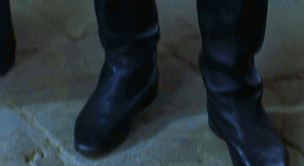
Chris Christie on The Late Show with David Letterman. Image: Telegraph (UK)
Basically, he went on Letterman and good-naturedly joined in the host's fat jokes. It's odd, but no commentators yet seem to have situated this donut-chomping incident in the context of talk-show guests always being encouraged to join the hosts in silly jokes and stunts of this nature, often at their own expense.
But because Christie is fat, commentators have interpreted his participation as his not taking his health seriously. He had to address the issue in a press conference: "The idea that somehow I don't care about this – of course I care about it, and I'm making the best effort I can," the governor told reporters.
The drama was stoked by comments made by Dr Connie Mariano, who was the White House physician to George HW Bush, Bill Clinton and George W Bush. Mariano told CNN, "I'm worried about this man dying in office."
However, at the press conference Christie hit back: "I find it fascinating that a doctor in Arizona who has never met me, never examined me, never reviewed my medical history or records, knows nothing about my family history, could make a diagnosis from 2400 miles away … [P]eople who have a medical license, who have the privilege of having a medical license, should in my view conduct themselves more responsibly than that. If she wants to get on a plane and come here to New Jersey and asks me if she wants to examine me and review my medical history, I’ll have a conversation with her about that. Until that time she should shut up."
Christie is absolutely right. His appearance has nothing whatsoever to do with his ability to do his job, and his health is not the business of anyone but him and his doctor. But when a fat person reaches a position of public prominence or authority, our responses are often limited to moral panic about 'obesity'.
In a culture obsessed with outward appearances, someone's fitness for public office dovetails with their physical fitness. We find it really difficult to believe that someone who looks fat on the outside could be fit on the inside. And we worry that even tolerating fatness in public sends an unwelcome message that it's acceptable to be fat.
I think it's interesting to see this happening to Chris Christie, because we often associate fat-shaming with misogyny. But clearly it happens to fat men as well as fat women.
In my book, I spend a lot of time on two key concepts: orthovestia and scienciness. Orthovestia, a term I've coined from the Latin for 'correct' and 'clothing', is the cultural notion that only ideal bodies are allowed to be seen in public. We learn what is and isn't ideal through pop culture, and are taught it's our job to use diet, exercise and 'flattering' clothing to maintain an ideal figure, to make ourselves more like the ideal, or camouflage that we aren't.
Orthovestia works through the act of looking. From an early age, we are trained to gaze and judge: at our own bodies; at the bodies of celebrities; at the bodies of strangers. The negative judgments we make about fat people, very skinny people, or people whose clothes we believe are too tight or baggy, too skimpy or see-through, are expressing our belief that they're unsightly. We don't like looking at these bodies, so we demand that they discreetly withdraw from view.
Scienciness, meanwhile, is a mode of rhetoric in journalism that uses scientific language, and strategically deployed quotes from actual scientists, in order to police cultural ideals. Sciency journalism is different to scientific journalism, which is the reporting of scientific research to a general audience. Rather, sciency writing is a technique for making orthovestic judgments seem indisputably correct. Think of it as being similar to 'truthiness', which is something that feels intuitively true without requiring any evidence.

I mean check him out! He's, like, twice the size of Obama, so he's, like, half as likely to be president! It's true because science!
So, we subject Christie to our gaze. And because his fatness is undeniable, and because doctors and researchers are constantly telling us obesity is unhealthy, we 'diagnose' him from afar the same way Dr Mariano did.
As commenter Raphaela V wrote at ABC News (with my emphasis):
"…it doesn’t take even a medical license to look at this guy and know all the things the doctor said are true. If he’s that irresponsible with what goes in his mouth, he’s going to be that irresponsible with any responsibility given to him."Fat people are held to much more rigorous standards of health than thin people. This is because we can't 'see' unhealthiness in thin people the same way, so we don't fret about their fitness to hold public office. Fat people, however, have to perform their fitness in public.
This is why Christie was under such pressure to tell journalists his "plan" to lose weight – he has to be seen to be doing something to become less unpleasant to look at. Under orthovestia, it's simply unthinkable that someone has better things to do than change the appearance of their body. So along with being told we look bad, we're fed imagery of makeovers, weight-loss successes, and how to 'dress for our shape'.




